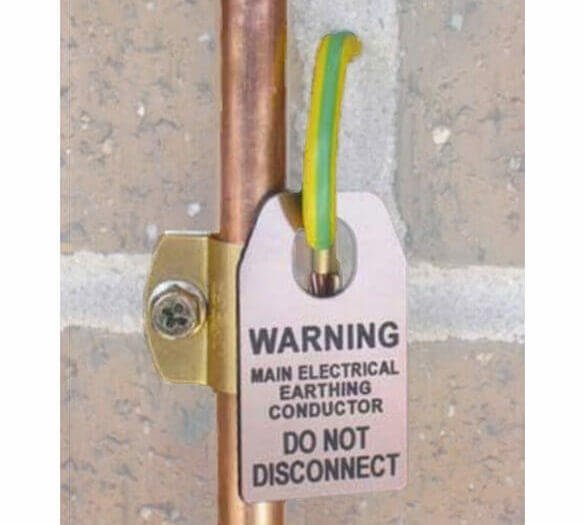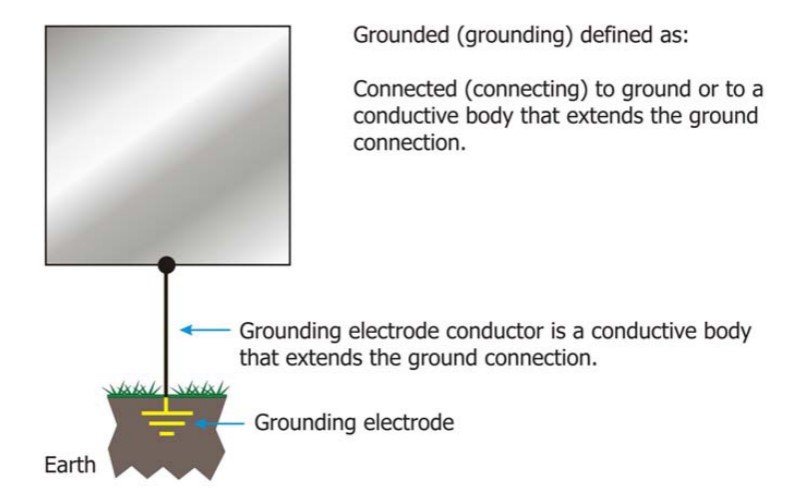Ground and/or Earth are generally used to define a common reference point for power/signal. While IEC (IEV ref 195-01-01) defines this reference point as earth, IEEE (Standard Std 142-2007) defines the same point as ground and NEC defines ground itself as a connection to the earth. But are earthing and grounding the same, let’s find out. This can bring you clarity on various misconceptions related to earthing and grounding.
- IEC’s (International Electrotechnical Commission) definition of Earth
- The National Electrical Code, or NFPA 70 definition of ground
- IEEE’s (Institute of Electrical and Electronics Engineers) definition of ground
- Minor differences between earthing and grounding as per IEEE (Interpreted from IEEE Std 142-2007).
- Bottom Line: Are earthing and grounding the same?
The terms earthing and grounding seemingly are almost alike but have a very slight difference according to IEEE but they are one and the same as per IEC. Various technical committees have defined these terms in similar but slightly different ways. First of all, let’s see those definitions.
IEC’s (International Electrotechnical Commission) definition of Earth
Below is the definition given for reference earth by IEC:
part of the Earth considered as conductive, the electric potential of which is conventionally taken as zero, being outside the zone of influence of any earthing arrangement.
Note 1 to entry: The concept “Earth” means the planet and all its physical matter.
IEC 60050-195-01-01
Below is the definition given for reference ground plane:
flat conductive surface that is at the same electric potential as reference ground, which is used as a common reference, and which contributes to a reproducible parasitic capacitance with the surroundings of the equipment under test (EUT).
Note 1 to entry: A reference-ground plane is needed for the measurements of conducted disturbances, and serves as reference for the measurement of unsymmetrical and asymmetrical disturbance voltages.
Note 2 to entry: In some regions, the term ‘earth’ is used in place of ‘ground’.
IEC 60050-161-04-36
From the above definitions, it can be understood that according to IEC, ground, and earth are the same. The only thing is, in some regions, the term earth is used in the place of ground. Also, IEC considers reference earth and reference ground as one (IEC 60050-195-01-01).
The National Electrical Code, or NFPA 70 definition of ground
Article 100 of the NEC defines ground as “the earth.”
IEEE’s (Institute of Electrical and Electronics Engineers) definition of ground
Ground: A conducting connection, whether intentional or accidental, between an electrical circuit or equipment and the earth, or to some other body that serves in place of the earth.
Grounded: Connected to earth or to an extended conducting body that serves instead of the earth, whether the connection is intentional or accidental.
“The Authoritative Dictionary of IEEE Standards Terms, Seventh Edition,” in IEEE Std 100-2000 , vol., no., pp.1-1362, 11 Dec. 2000, doi: 10.1109/IEEESTD.2000.322230.
According to IEEE, grounding can be a connection to earth or any other body that serves in the place of the planet. This makes the earth slightly different from the ground. IEEE refers to ‘ground’ as a conducting connection to the earth and ‘earth’ as any point on the surface of the planet earth.
This makes it more confusing now. While IEEE considers the ground as a conducting connection and earth as soil or planet earth, NFPA and IEC consider ground and earth the same.
However, a more convincing explanation is presented by the IEEE Std 142-2007. It says that, even though ground and earth are almost alike, they are not. An electrical ground can be far away from the earth.
Consider an electrician working on the tenth floor of a steel structured building. To him, the ground is a metallic frame, connected equipment, and the grounding conductors that are present on that floor. Here, the potential of any point on the surface of the earth is of negligible importance. For him, the metal structure and the grounding points are the references, not the earth itself.
Minor differences between earthing and grounding as per IEEE (Interpreted from IEEE Std 142-2007).
| Earthing | Grounding |
|---|---|
| Earthing is an intentional connection to any point on the planet earth. | Any point of reference that is considered to be at zero potential and may or may not have a physical connection to the planet earth. |
| Earthing is the term used in the UK and most other countries where IEC standards are followed. | Commonly used term in the US. Term ‘Earth ground‘ is used when the earth itself is used as a reference point. |
| Earthing is done to ensure the electrical safety of the equipment and personnel during surges, static build-ups, electric shocks, and EMC. | Grounding is done to ensure system safety and to provide a point of reference. However, Earth-ground serves the same purpose as the earth. |
Also read: Difference between grounding/earthing and bonding
Having said that, let’s check out the symbols of the earth and the ground as per IEC 60417:2002 & IEEE/ANSI 315-1975 and see what makes the Earth different from the ground.

No. 5017 Earth (IEC 60417:2002) or Ground (IEEE/ANSI 315-1975): Symbol for all connections to all direct connections to the surface of planet earth or the surface of an air, space, or land vehicle that is not conductively connected to the earth.
No. 5018 Low-noise ground (IEEE/ANSI 315-1975) or clean earth (IEC 60417:2002) or Functional earthing; functional grounding (US) (IEC 60417:2002): Symbol for all functional earthing. This is done basically for the error-free operation of the equipment.
No. 5019 Protective earth or protective ground (IEC 60417:2002) or safety or protective ground (IEEE/ANSI 315-1975): Symbol for ground/ earth connections to avoid electric shocks.
No. 5020 Frame or chassis (IEC 60417:2002) or equivalent chassis connection (IEEE/ANSI 315-1975): To identify a frame or chassis terminal.
From the above symbols, it is evident that various types of earth and ground share the same symbols.
Bottom Line: Are earthing and grounding the same?
Well, even though IEEE Std 142-2007 tries to give a convincing explanation to differentiate between earthing and grounding, IEEE/ANSI 315-1975 fails to establish that by standardizing the same symbol for the earth and ground. Moreover IEEE/ANSI 315-1975. Therefore, it can be concluded that the earthing and grounding are the same. Both refer to the connection to a point on the surface of the earth. While IEC refers to this connection as ‘Earthing’, IEEE calls it ‘Ground’. Whether you should call this connection ‘Earthing’ or ‘Grounding’ purely depends on the region and the standards being followed in that region.


